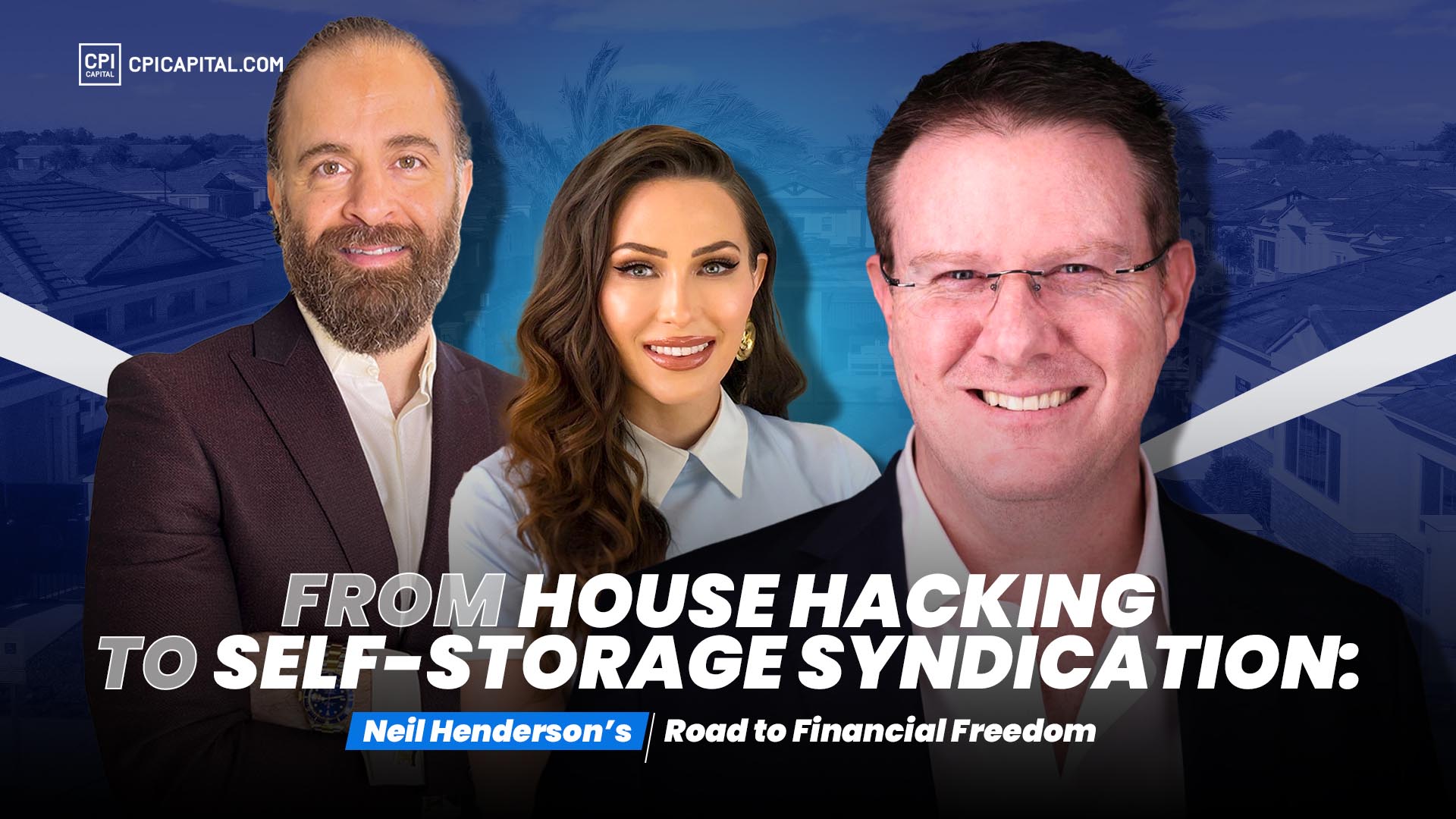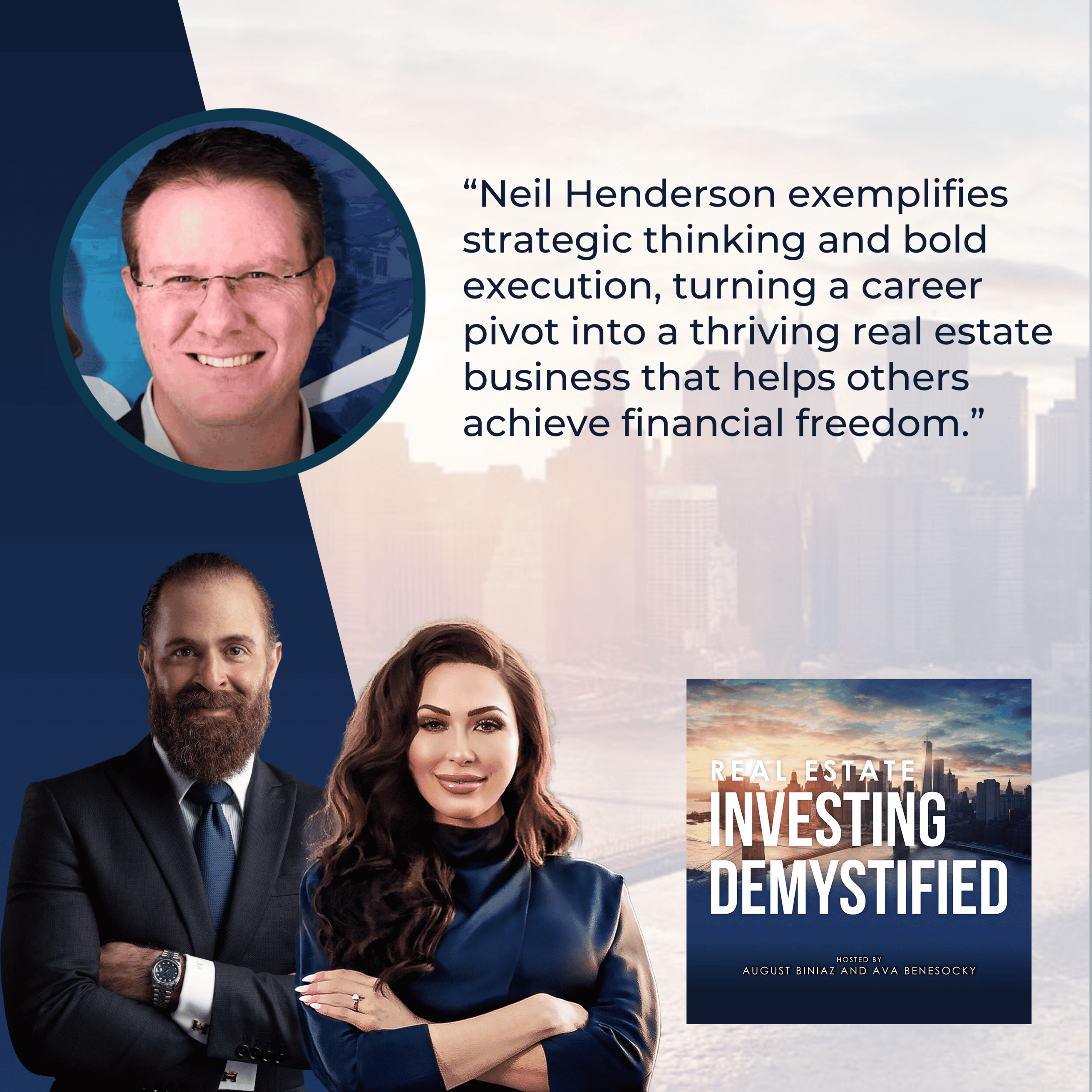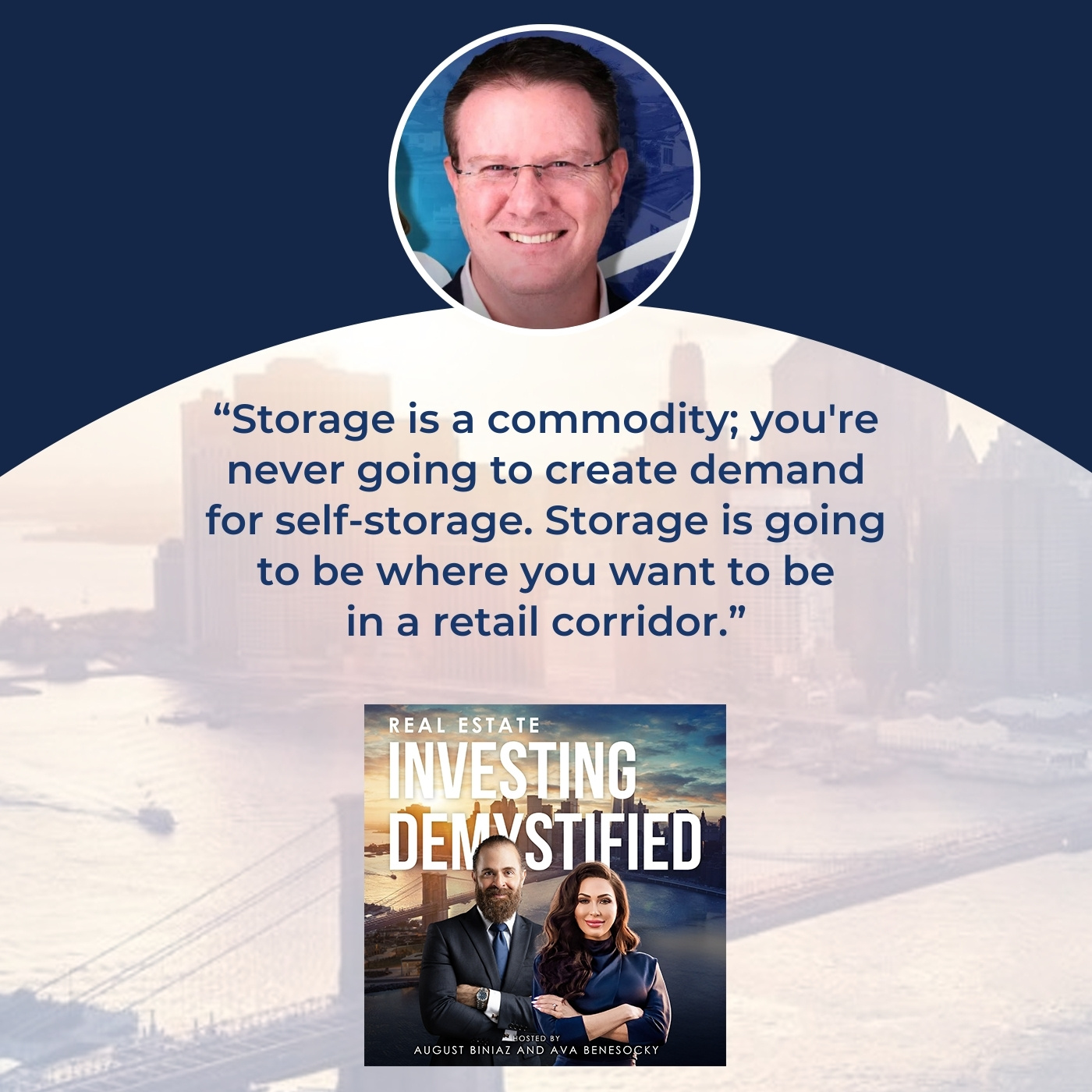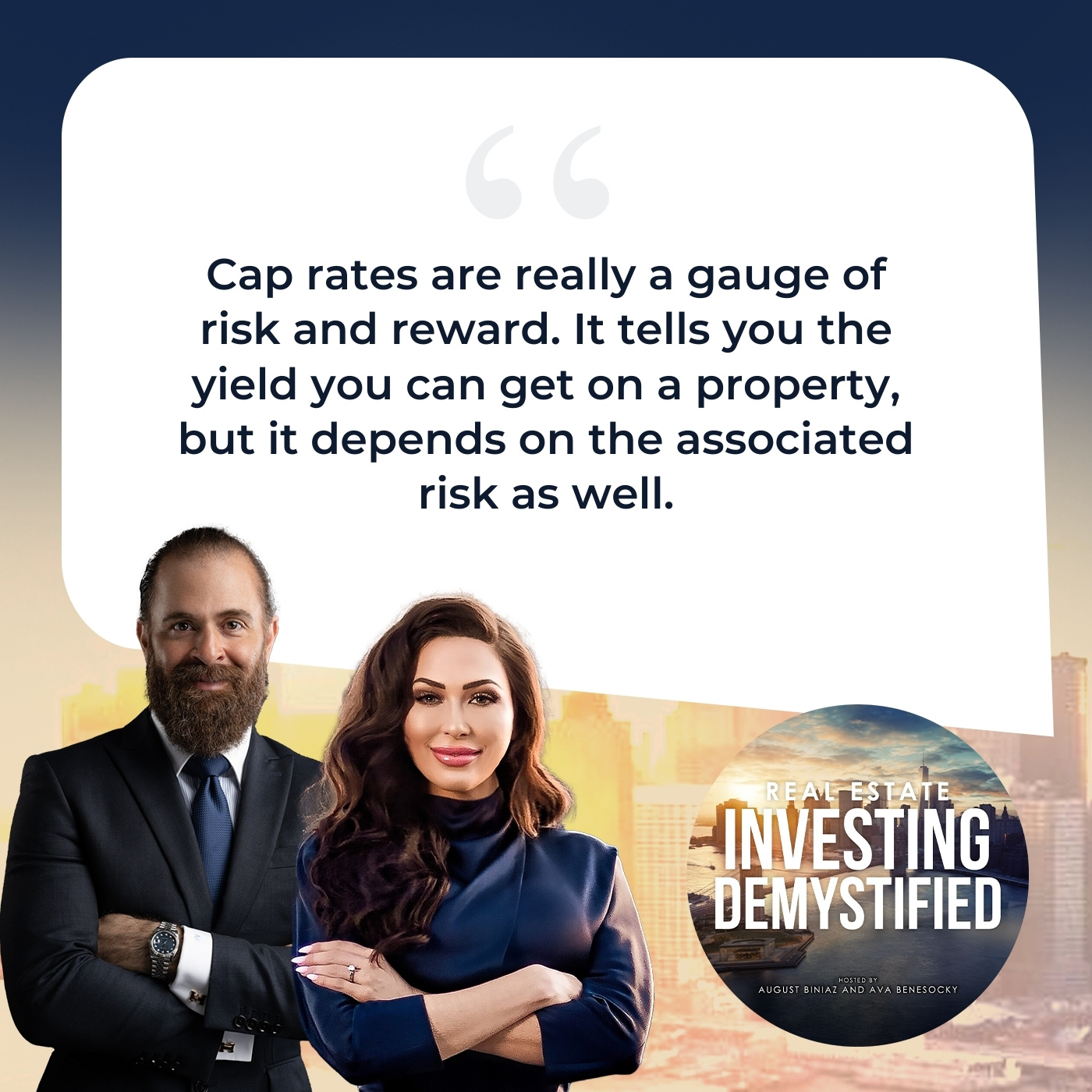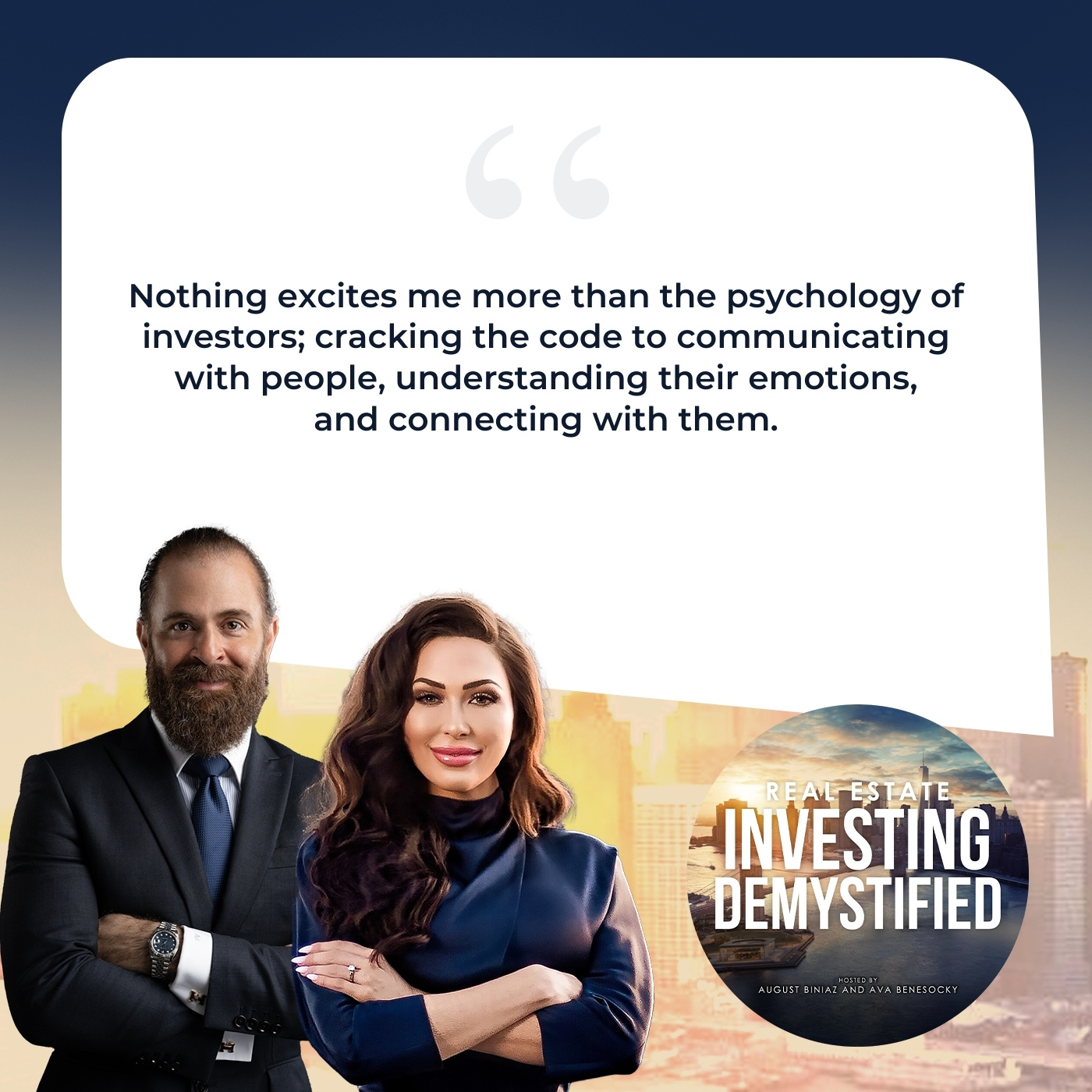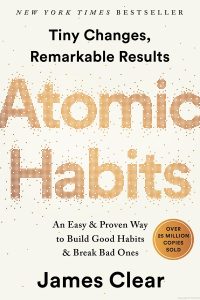Self-storage might seem simple—but it’s a powerful wealth-building strategy when done right. Neil Henderson, co-host of the Truly Passive Income podcast and General Partner at Nomad Capital, shares how he left an 18-year defense contracting career to achieve financial freedom through real estate. From house hacking and Airbnb to large-scale self-storage conversions, Neil breaks down why this asset class offers strong returns, lower expenses, and scalable opportunities. He also explains Nomad Capital’s conversion-focused strategy, key metrics for market selection, and the investor relationships that fuel successful syndications.
Get in touch with Neil Henderson:
If you are interested in learning more about passively investing in multifamily and build-to-rent properties, click here to schedule a call with the CPI Capital Team or contact us at info@cpicapital.ca. If you like to co-syndicate and close on larger deals as a general partner, click here. You can read more about CPI Capital at https://www.cpicapital.ca.
#avabenesocky #augustbiniaz #cpicapital
—
Watch the episode here
Listen to the podcast here
Important Links
- Truly Passive Income Podcast
- Nomad Capital
- Neil Henderson on LinkedIn
- Afford Anything
- BiggerPockets
- Joe Fairless’ Website
- Erik Hemingway on LinkedIn
- CPI Capital
- Clint Harris on LinkedIn
- Mr. Money Mustache
- Atomic Habits
- Replay
About Neil Henderson
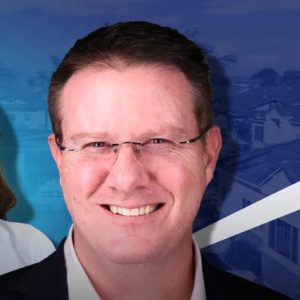
Neil’s journey began with house hacking his Las Vegas home, accelerating his family’s path to financial independence and fueling his passion for the FIRE (Financial Independence Retire Early) movement.
After nearly two decades as a defense contractor, he transitioned full-time into real estate, syndicating over $75M in commercial transactions and helping raise $17M in investor equity.
From House Hacking To Self-Storage Syndication: Neil Henderson’s Road To Financial Freedom
From Defense Contractor To Real Estate Mogul: Neil Henderson’s Origin Story
Welcome back to Real Estate Investing Demystified.
Welcome back. It’s a beautiful summertime here in Vancouver, the West Coast of Canada. It’s scorching out there in the US. I was talking to someone from Texas. It’s super hot. Florida is not only hot, but humid as well. Global warming is taking its toll on the world. I don’t know about that. I had a presentation on build-to-rent. I demystified build-to-rent. I gave a presentation. We had a bunch of attendees. I spent a lot of my time on geopolitics. You don’t want to mix the two. You want to keep that world of geopolitics and the world of real estate investing. We deal with investors. We’re going to converse about this idea of investors and raising money from our guest, but you want to keep this separate. You never want to talk to an investor about your political views or ideas.
It can make it or break it for you. I gave you a ten out of ten on that.
I appreciate that. I’m always very hard on you when you do presentations. I am there, ripping you apart, then I do one, and you gave me ten out of ten. I must have done well.
I was being honest.
Thank you. I appreciate that.
You’re very welcome. You did a good job.
My mother, all my life, has told me, “Talk slow.” I’ve been able to do it sometimes, but most times, I talk fast. At least people don’t have to press 2x or 1.5x when they listen to me on podcasts. I’m quick, to the point, laconic, as they say. Quickly, last point about our show, Real Estate Investing Demystified. We bring on a diverse group of guests. We’re going to be talking about a different asset class under the commercial real estate umbrella, which is self-storage, which is a very interesting asset class. It behaves similarly to other asset classes. At the end of the day, it’s about a deal. It’s about the money. It’s about executing the business plan. Why don’t we go ahead and tell people about our guests and start off the show?
Self-Storage: Unpacking A Unique Asset Class
We are joined by Neil Henderson, professional real estate investor, co-host of the Truly Passive Income podcast, and general partner at Nomad Capital, a Wilmington, North Carolina-based self-storage syndication firm specializing in conversions. Neil’s journey began with house hacking his Las Vegas home, accelerating his family’s past financial independence, and fueling his passion for the FIRE movement, which is the Financial Independence Retire Early movement. After nearly two decades as a defense contractor, he transitioned full-time into real estate, syndicating over $75 million in commercial transactions and helping raise $17 million in investor equity. Welcome to the show, Neil. We’re excited to get into everything with you.
Thank you for that lovely introduction, Ava and August. I’m happy to be here.
Neil, for those who haven’t met you yet, maybe you can share your journey from being a defense contractor and then pivoting to a real estate investor.
I’ll give you the brief version. I transitioned from a career in acting in 2003 and became a defense contractor. I did that for eighteen years. We bought a house in Las Vegas in the summer of 2013. It had a little guest house on the front of it. For about 30 seconds, that was going to be my ultimate man cave before my wife said, “Absolutely not. That’s going to be the place where our guests come and stay,” specifically my in-laws and people who come to Las Vegas to visit us. We painted that little guest house, like a nice little hotel room.
We added a little coffee bar, a small microwave, a little refrigerator, and things like that. It was a great little space. We had no intention of doing anything more than that with it. Christmas day in 2013, my mom, who is one of the smartest business people I’ve ever known, with nothing but a high school degree, came to me. She handed me this article about a company called Airbnb. She said, “I think it would be a great idea if you guys rent out your little guest house on this platform.” I was like, “Whatever, Mom.”
My mom had always been coming to me with business ideas for me, everything from mobile car washes to photography, and things like that. Finally, I went away and thought about it. In January of 2014, I was like, “I’ll give this a try.” I went out, took some photos of the space, wrote up a description of it, and listed it on Airbnb. Within 48 hours, we had our first booking. We were one of the highest-rated listings for the next five years in Las Vegas. We were 65% occupied every year. It allowed us to pay down our mortgage at an accelerated rate. It allowed my wife to be a stay-at-home mom when we had the birth of our son. It gave me a taste for real estate. I’ll stop there. I then branched out into other real estate, but that was the first thing that gave me the taste of real estate, and gave me the bug.
The Airbnb Leap: From Side Hustle To Real Estate Bug
I can’t believe you left defense contracting, which is in 2003. The 9/11 was in 2001. It was a good time to be in defense contracting, particularly since sometimes the opponents of US foreign policy say that US foreign policy is in perpetual war. You left one great business for another great business. Talk to us about moving from a single-family house hacking type of style to looking at larger deals, this concept of real estate, private equity, or syndications, as it is known. Talk to us about that transition.
How did you get introduced to it?
It was not a straight path by any stretch of the imagination. We were operating the short-term rental. At that time, we’re sort of ready, fire, aim. We put it up and learned as we went, and made a bajillion mistakes, but none of them fatal. The property was outside our front door. We cleaned it ourselves early on. We handled all the guest communication and all things like that. It was the closest thing I’d ever experienced to mailbox money at the time. It took about a year before I sat down and did the math of how much we were making. I was like, “This is good. I’ve got to figure out a way to scale this.”
I started researching. I came across an article written by a woman by the name of Paula Pant, who has a well-known website called AffordAnything.com. She was a long-term rental investor based in Atlanta. She has written an article about converting one of her long-term rentals into a short-term rental. She was comparing the ROI on it and the ROT, return on time. I don’t remember much about the article, but I remember there was a little link over on the side of her website to a website called BiggerPockets. That was when I first became exposed to BiggerPockets.
I clicked on that link, and I went down the rabbit hole. If anybody has ever fallen down that BiggerPockets rabbit hole, it’s deep. I ended up probably for the next six months consuming every BiggerPockets podcast I could get my hands on. I drove my family and friends nuts with a new strategy every week. You’ve got lease option sandwiches, small multifamily, self-storage, large multifamily, you name it, and note investing. They thought I was crazy.
If anybody has ever fallen down that BiggerPockets rabbit hole, it's deep. Share on XI was struggling to find a strategy that would work for me where I was based on my time, experience, and the money that I had. I went to some of the local REIAs in Las Vegas, which are mostly house flippers. I had no desire to flip houses in Las Vegas. It’s a house flipping market. I looked into scaling short-term rentals. By then, Las Vegas was already getting a little hostile to short-term rentals. I was a little hesitant to go too far down that path. A friend of mine, a local real estate house flipper, said, “There is a new real estate conference that’s having its first meeting in February in Denver. You should go. It’s called the Best Ever Real Estate Conference, put on by a guy by the name of Joe Fairless.”
I had never heard of him. I had no business being at this conference. I was like, “Sure, whatever. I’ll go.” I went. It’s primarily a syndicators conference, primarily multifamily. At the time, there were a few self-storage, retail, and all kinds like that. I remember the first day at the conference, I’m sitting there going, “What am I doing here? I have no business being here. I haven’t even bought a long-term rental. I’m sitting here listening to people talk about buying multimillion-dollar multifamily properties.”
I sat there. There was a speaker by the name of Scott Meyers. He was talking about self-storage. That was the first time I’d ever heard about self-storage as an asset class. It clicked for me. It made sense. They broke for lunch. I went downstairs to the lunch buffet room. I grabbed my lunch. I sat down at the lunch buffet table that changed the course of my life. There was a man there sitting, telling a story. His name was Erik Hemingway.
He was telling the story about how he built his first self-storage facility in 2006 in Prescott, Arizona, and then proceeded to go and live on a sailboat with his family for three and a half years in the Mediterranean, sailing all over. They ended up sailing across the Atlantic and settling in Wilmington. I was like, “I need to get to know this guy.” That was how I met my now business partner, Erik Hemingway. I’ll stop there because otherwise, I’ll go on and on.
Self-Storage Explained: Business Models And Market Strategies
That’s an exciting story. That’s our conference. We are familiar with that. We are familiar with Joe Fairless. I spoke at his conference. I spoke on stage there a couple of years ago. I love it. That’s where your eyes opened up to this whole new world. I would love for you, Neil, to give us a crash course on self-storage and what you guys look for. Do you develop them? Do you buy already stabilized self-storage? What’s the business model? How does it all work? We would love for you to give our viewers and ourselves a crash course, please.
Storage is a very simple asset class. It’s a commercial asset class. It involves renting people boxes of air. Most storage operators will keep things simple. People are renting on a month-to-month lease. You don’t have long-term leases. Oftentimes, when people rent a unit from you, most people expect to be there for three months. The average person rents a storage facility for about eighteen months on average.
Usually, what will happen is you’ll move your stuff into a self-storage facility, and then you’ll come in at a certain rate. Within about three months, they’re going to raise your rates by about 10% or 15%, which is usually not enough to get most people to move out. The longer you stay there, usually every three months, they do rate increases until people cry uncle. As an asset class, it’s got a lower expense ratio than multifamily. Multifamily will tend to be about 50% of your expenses going to go out to expenses, not including debt service, whereas self-storage is typically a lower expense ratio. It’s around 30%. You get to keep almost 70% of whatever your gross revenues are, not including debt service.
There are typically 4 to 5 primary strategies with self-storage. Buying an existing facility and expanding it. It’s got room for expansion. You can buy an existing facility and do an operational turnaround. You’re raising rents. You can develop from the ground up, or you can do self-storage conversions. You can take an old, empty, big box retail building, like an old Kmart, an old warehouse, an old mill, or an old office building, sometimes, and convert it to self-storage. Sometimes, they buy existing, and they’re buying cashflow.
There’s usually somebody who is borrowing at a significantly lower amount than the federal rate. They usually use insurance money to buy it. We like the conversion strategy because we like heavy value add. If you or I were to go out and build a facility from the ground up, on average these days, it’s going to cost us about $120 a square foot, not including the cost of the land. It’s going to take us anywhere from 12 to 36 months to entitle the land and to prep the land before you even start to turn a shovel and start to put up the bricks and sticks.
With conversion, we’re typically buying on average for about $25 a square foot, oftentimes below the replacement cost. We’re usually doing the conversion for about $45 a square foot. On average, we’re all in for about $65 to $70 a square foot. That includes the cost of land, the building, the conversion, everything, and it only takes us about twelve months from the time we acquire the building to the time that our doors are open. We’re cheaper and faster to market.
What does it look like as far as your business model? Are you looking to hold it long term? Are you looking to hold it for 3 to 5 years, or 2 years? Talk to us about that.
When we started off, this was our preferred exit. Our preferred business plan is to buy and hold for the long term with our investors. We create such significant value in year one that we’re typically, if lease up goes the way we project, around year five, we’re able to do a cash-out refinance. It comes out 100% tax-free for the investors without stressing the asset. Everybody stays in it long term. We continue to cashflow. It’s very market dependent, both on the local market and also the macro market.
Interest rates have shot up significantly in the last few years. Sometimes, it doesn’t make sense to do a cash-out refinance. It also doesn’t often make sense to hold it long-term. There’s an awful lot of money that’s coming together to buy self-storage. We’re starting to see a period where the cap rates are going to start compressing again with self-storage, because there hasn’t been a lot of construction. Self-storage has been dropping because the interest rates were so high. There’s a lot of capital out there chasing them. A lot of institutional capital is chasing those facilities. We think there’s going to be an opportunity to do holds where we’re only doing 3 to 5 years.

Self-Storage: In the last 12 months, a significant amount of money has come together to buy self-storage. We’re starting to see a period where cap rates will begin compressing again.
You mentioned cap rates. Let’s talk about cap rates. What cap rate ranges do you typically acquire self-storage at?
We don’t buy on a cap rate because we’re not buying an existing facility that has income. Our cap rate is zero. We’re buying a nasty old vacant building that has been sitting empty for 5 to 10 years. We bought an old vacant Piggly Wiggly, which is a grocery store here in Macon, Georgia, that had been vacant for ten years. It had a tribe of meth heads living in it for several years. It had every piece of copper stolen out of it. The only value of the building is essentially whatever somebody was willing to pay for it. It was the value of the land.
Cracking The Code: Key Metrics For Self-Storage Investment
In multifamily, we have certain markets that we invest in. We’re very data-driven. We follow certain metrics, job growth, population growth, rent growth, and income growth. Not to mention, we try to focus on landlord-friendly states and business-friendly states. When it comes to self-storage, you mentioned you bought a vacant grocery store, I believe you said. What is it that you guys look for when you’re looking to acquire a property and do the conversion and self-storage? Are there certain metrics that you guys follow? How do you know what’s a good market to invest in?
We are typically investing in secondary and tertiary markets across the Southeast right now, from Virginia, North Carolina, South Carolina, Georgia, and Tennessee. We love Florida, but we’re not crazy about the insurance market in Florida. You’re not going to see us in a Charlotte or an Atlanta, but you may see us in a Gastonia, a Reidsville, or a Macon, areas that are on the outskirts of these big primary A markets.
We don’t typically like to go in and compete with those REIT-level self-storage operators, the public storage, the extra space, and things like that. We like to be out in those tertiary and secondary markets. Storage is a commodity. You’re never going to create demand for self-storage. Storage is going to be where you want to be in a retail corridor, where people are driving by it every day, driving from where they live to where they work. They see it.
You typically want to be in an area where there’s more than 25% of the population is renters. Renters are higher consumers of self-storage. Oftentimes, what you’ll look for in storage is what we call the supply index. This is the ballpark figure that a lot of storage operators use for a number of years. You want a normal market. A market equilibrium is about 7 square feet of self-storage per capita. If there are 100,000 people in an area, then you expect to see about 70,000 square feet of storage. It would be a supply index. If there’s less than that, then it’s usually an undersupplied market. You should be able to build new storage there. It should lease up, or it could be oversupplied if it’s more than that.
The reality is that every market is different. When I was in Las Vegas, when I was first getting started in storage, I remember looking at facilities. The supply index in Vegas was over 11 square feet per capita, which would tell you that that’s an oversupplied market. In reality, Las Vegas is a market that uses a lot of self-storage. They were at 11 square feet per capita, but every facility was full, and they were constantly raising rates, whereas you may go into another area and it would say that it would appear to be undersupplied. You may have an area there where people have basements and they have big garages, or they don’t have a lot of HOAs. They’re able to store stuff on their property.
Oftentimes, when we start digging into a market, one of the things that we’ll look for is we’ll go through and we’ll call the other operators in a 1, 3, and 5-mile area from our subject site and find out whether or not they’re full and what the rates that they’re charging are. If they’re full and their rates are high, then that tells us that even if it says that the supply index is high, there’s still demand there for some reason. That’s typically what we’re looking for.
That would be a very good indicator to follow. Do you have any questions?
Yes, I was going to take a step back and ask you a couple of questions. You were on a roll, so I didn’t want to slow you down. You talked about conversion. You talked about how you guys take these older buildings. Is there a specific structure that works out perfectly for your business plan? Something comes across your desk, and you’re like, “This is perfect.” What is that?
Vacant big boxes, anything more than about 65,000 square feet, are perfect. The big open floor plan doesn’t require a ton of tearing down walls and things like that. We did a facility in Gastonia, North Carolina. There’s a former Sun Drop bottling plant. It was multiple buildings that had been built over 100 years, which is a very broken-up space. We’re not afraid. We have our own internal construction team that has experience doing this. We’re not going to shy away from them.
The conversion cost is usually going to go up. The more walls that we have to tear down, the more oddly shaped we have to do our unit layout. One of our facilities in Lexington, North Carolina, was a sale-leaseback from a local brewer. It was about a 90,000-square-foot building. The bottom floor was the brewery. They sold the building to us and then leased back that bottom floor. We converted the upper floor into self-storage. It’s a nice open floor plan.
It’s one that’s leasing up like crazy because we seem odd. You’ve got a self-storage facility over a brewery. Customers come there every night to drink beer, and they see the storage facility. There’s awareness that it’s there. August, you’d think that it would be cut and dry. What would be perfect? I would say that if it’s a vacant big box, a big open floor plan, that’s ideal, but we’re not going to shy away from something that will work for us.
How about unit sizes? I personally have driven by self-storage facilities that are even housing or storing boats. I’ve driven one closer to urban areas where there are much smaller units that don’t hold anything too large. What is that sweet spot for you guys?
It’s very market-driven. We will usually do a third-party feasibility study. They’re going into detail, digging into the market, and figuring out in the competitor facilities, what units are leasing up the fastest? Are there any units that don’t appear to be in demand? We have a few facilities that have boat and RV parking. It’s not a primary thing that we do usually, but a lot of these facilities come with a lot of vacant land. A lot of times, we will either put boat, RV parking on. We’ll look into selling our parcels or doing a ground lease with a fast food restaurant or things like that. The unit size is everything from a 5×5 unit to a 10×20, even 10×30s, usually not much bigger than 10×30s.
I want to take a quick step back and talk about cap rates. Cap rates are a gauge of risk and reward. Cap rate tells you what type of yield you can get on a property, but it depends on the risk associated with that property as well. It is market-driven as well. In some markets, a cap rate on multifamily property is higher. A cap rate is more compressed in some other markets. It depends on the asset class as well, if it’s A, B, or C, core, core plus, value add, or opportunistic. In development, you’ve got unlevered yield on cost because you want to know what type of yield you’re going to have after the construction is complete. When you guys are developing and rebuilding these projects, do you have a cap rate you want to be at stabilization? What is your stabilized cap rate?
The Numbers Game: Underwriting And Returns In Self-Storage
We’ve underwritten for an exit cap of anywhere from 6% to 7%. We try to be conservative. You’re usually going to be in those A-class markets like New York City, Los Angeles, and Phoenix. If you’ve got a giant brand new build, three-story extra space, some of those are trading at four caps or five caps. We’re typically in secondary and tertiary markets. As I said, we’re underwriting for around 6% to 7%. For us, the cap rate is what we have to watch. We’re creating so much value on that front end. We’re forcing the appreciation on the asset class.
We’re taking a building that we’re buying for $1.5 million. By the time we open it, and it’s an empty self-storage facility, oftentimes, the bank is going to come in and appraise it at a CO, empty facility, anywhere from $6 million to $7 million. Usually, if we lease it all the way to stabilization at 85% occupancy, and we’ve got an exit cap, we’re looking at an exit price of around $12.5 million to $14 million.
What type of economics are you achieving for your LPs?
We like to try and target around a 20% IRR, a two-time equity multiple, in five years. We’ve only had one exit thus far. We exited a Kmart conversion in Danville, Virginia. That one was originally, from the very beginning, a five-year exit. We exited in 37 months. We got our investors a 17% to 19% and beat the IRR by about 1%. It was about a 1.7 to 1.85 equity multiple.
For us, while the cap rate is something we have to watch, we're usually creating so much value on that front end. Share on XAs an investor investing in a self-storage, what could go wrong in self-storage? In multifamily, we always tell investors, for example, one worst-case scenario would be everybody moves out of the building. Occupancy drops. If we drop through a certain occupancy, we call it the break-even occupancy. We let investors know, even in our monthly communication, what occupancy the building is at. What is that like in self-storage? Do you guys have similar numbers that you share with investors?
We’re typically targeting it on a conversion. We can usually hit break-even occupancy around 40% to 45%. A lot of that depends on what kind of rent we’re getting. The worst-case scenario for storage has been the last years. It has been a tough time in self-storage. Maybe not quite as hard as multifamily, but a lot of what happened in the last three years with storage was when the interest rates shot up and housing prices shot up at the same time. It is an unusual thing to happen. Normally, when you have interest rates rise, you’ll see housing prices come down.
That froze the housing market. You had a huge drop in people moving, which is one of the primary drivers of demand for self-storage. Traditionally, we would see facilities leasing up. For 30 years, facilities would lease up on around 3% per month, which means that if you have an empty facility, it’s going to lease up to stabilization in about 28 to 30 months. We saw that. That Danville property, we opened the doors there in May of ’23. We leased up right on pro forma for twelve months. In April of ’24, when the housing prices and interest rates hit, all of a sudden, they dropped to about 1.2%. You’re talking about a facility that was going to lease up to stabilization in about 28 months. You’re looking at 50 months.
Luckily for us, because we bought at such a low cost basis and we’d created so much value right out of the gate, it didn’t put us in any distress. Ultimately, as the market has been starting to turn, an operator capital partner who was hungry for self-storage came to us. We weren’t looking to sell, but they made us an offer that was about $1 million over our net present value. It made sense for our investors to take some chips off the table and exit.
Raising Capital: The Psychology Of Investor Trust
I want to switch the conversation a little bit to something that I’m very passionate about. You mentioned in your bio that you helped raise over $17 million for self-storage. This comes down to me here at CPI Capital. I’m more focused on the equity side of the business. Nothing excites me more than the psychology of investors. Nothing excites me more than cracking the code to communicating with people, understanding their emotions, and connecting with them in order for them to build this knowledge and trust with you to eventually invest their hard-earned money with you.
Talk to us about how you connected with investors. How did you build trust with investors to raise $17 million? For people who are tuning in, $17 million in capital to raise is not an easy task. Raising equity is one of the toughest parts of syndication. I’m sure you can agree with that. Talk to us about your journey in raising that amount of capital.
You took the words out of my mouth. The key phrase there is know, like, and trust. People are going to invest with people they know. There are circles. Those initial investors were people who had known us for a long time. I give ample credit to my partner, Clint Harris, who’s a medical device salesman. He had a lot of our early investors who were white coat professionals with whom he built a relationship. They were friends of mine. They were family members of mine. It’s a white-knuckle prospect of getting your friends and family to come in and invest with you.
People invest with those they know, like, and trust. Share on XWe had experience in self-storage and commercial real estate, but we hadn’t syndicated, we hadn’t worked, and we hadn’t done anything with investors on those first deals before. We syndicated our first deal in October of 2021. You start thinking to yourself, “If this goes bad, Thanksgivings are going to be uncomfortable.” I also believed in our team. I believed in the asset class. I believed in our business plan. That early capital we raised for probably those first six deals, and our deals are not huge, we’re raising on average $1 million to $1.5 million.
These are not $25 million multifamily deals that we’re buying. They’re fairly small raises comparatively. Early on, we were able to raise funds from friends and family. Eventually, those friends and families get tapped out. You start having to go outside that. You start then getting to know people who know them. Go to that next circle. It’s not the people who directly know you. It’s people who know the people who know you. Your conversion rate gets a little bit lower.
Eventually, we were doing all our raises as 506(b) syndications, which we could take non-accredited investors. We still like to start a lot of our raises like that because we want to bring along our friends and family who are not accredited. That presents a lot of challenges for you. You can’t generally solicit. You can’t advertise. It becomes very hard for people to get to know that you exist because you’re having to brute force, go out, network with people, and talk to people. You can’t specifically talk about what your deals are, but they get to know you. You build a substantive relationship. Eventually, you can start talking to them about your deals.
We opened our first fund about a year and a half ago. It was a $10 million fund for the purchase of 4 to 6 conversion projects. We raised about $4 million as a 506(b) syndication there, and then we converted to a 506(c). We started generally soliciting for the first time. We started advertising on Meta. If you are on Facebook or Instagram, and you click on one syndicator’s ad, you’re probably going to see a lot more of them. You’ll see mine or Clint’s face at some point.
You then start getting a very different type of investor. Ava, I don’t know if you’ve experienced this. It’s a different conversation where you’re talking to somebody who knows you or knows someone who knows you, to someone who literally clicked on an ad on Meta. I’ll stop and let you ask some follow-up questions. Otherwise, I’ll go on and on.
Go ahead right there. Differentiate between those two.
It’s a very different conversation. With someone who has clicked on an ad on Facebook or Instagram, they don’t know you. Something about the ad spoke to them. It usually has to do with the asset class. In reality, that’s not usually what people are investing in. It’s what a lot of inexperienced investors are going to focus on. The smart investors are quickly going to want to know who you are. They want to invest in the jockey, not the horse.
When I’m talking to an investor, I’m usually talking to them about, “What are your goals? What are you looking to get out of this?” I know that if somebody comes to us and they’re looking to replace an income, they’re looking for immediate cashflow, I will very quickly tell them, “We are not the operators for you. These are not the opportunities. We don’t cash flow for at least 36 months. This is more of a growth play.”

Self-Storage: If someone’s looking to replace an income or for immediate cash flow, we’re not the operators for you. These aren’t opportunities where we cash flow for you for at least 36 months; this is more of a growth play. Usually, that will weed out some people.
Usually, that will weed out some people, but then, some people, when you tell them no, their psychology will click in. “Now I want to know what you guys are about.” Oftentimes, those conversations are trying to educate people on who we are, what the asset class is, and what our business plan is, and trying to feel out whether or not our business plan is going to align with their goals. It’s a matter of them getting to know us. It usually takes a lot longer. There’s a lot longer timeline from the time someone meets us to the time that they’re willing to hand over their capital and sign a subscription agreement. The conversion rate is a lot lower. It almost becomes a numbers game at that point.
FIRE Movement: Achieving Financial Independence
I can relate. When I have calls with investors who clicked on an ad, for example, the first question I always ask them is, “How much do you know about our company?” I found that some investors went down a rabbit hole, researched, and knew a lot about me. They clicked on an ad. Those are the investors who invested right away, but then only came in for the last. You get the people who go down the rabbit hole, like you did with BiggerPockets.
They do know a lot about you. “I heard you say you had two kids.” I was like, “You know a lot about me. We threw the ad out last week.” You’re right. You do have all these people who are now following you, which is going to set you up for success in the future. I guess you can switch the conversation again. You talked about FIRE, which is the Financial Independence Early Retirement movement. Can you talk to us about that? What is this all about? It’s the first time I’ve heard of it.
I first heard about it from a man by the moniker, Mr. Money Mustache. It was the first time that anyone had put into my head the math around financial independence. I had dreamed of financial independence since I was probably 30 years old, when I was like, “At some point, I’m going to want to stop working. How do I do that?” I had first learned about investing in the stock market, but I never knew the math behind it. Anybody who invests in the stock market knows about retirement. You know about the 4% rule.
You take what it’s going to take for you to live in retirement. You divide that number by 4%, or you multiply it by 25. That will tell you how much of a nest egg you’re going to have to build up in order to stop working. Let’s say you have $3 million in a nest egg, and you have a 4%. The 4% rule means that you can spend $120,000 a year of that money while it grows at 7% to 10% earning the stock market. That’s the nest egg approach. Once I got into real estate, I started focusing partly on what I would call a cashflow approach.
I do both. I invest in the stock market, but I love real estate. I love the cashflow approach. I love the forced appreciation that real estate gives me. The idea there is I know I’ve got a number on my head of what I would like to have when I stop working. The goal is to build up a mix of a nest egg and cash-flowing assets that pay me enough that it meets those goals. Once you hit it, you’re now work-optional. The nice thing about the cashflow approach is that you don’t have to get to 100%. That’s where I got to in 2021. I am not financially free by any stretch of the imagination.
I have a very low cost of living because I house hack. I live in a house across the street from the beach. It’s 1/2 of a three-story townhome. We live on the top two floors, and the bottom floor is an apartment. It’s a totally separate entrance that we rent out on Airbnb. It pays our mortgage. Right there, I’ve removed one of the largest expenses that most people have. My housing is essentially paid for by a tenant downstairs. I had a couple of long-term rentals that have done well for me, which are paying me a pretty good amount per month. That created a certain amount of financial runway for me that, in September of 2021, I was able to go to my employer of eighteen years and say, “I’m done.”
I had the opportunity to take a chance on myself, go off, and be a full-time real estate investor at a self-storage private equity firm. I moved all the way across the country. It was not easy. I don’t necessarily recommend people do it exactly the way I did. It’s been a hard-fought three years. There has been a lot of belt-tightening. We’re now coming out of what a lot of us would call the valley of death. Things are starting to pay out. Things are starting to cash flow. That’s the basics of it.
Whenever you get out of your comfort zone, success usually finds you at some point, so good for you.
Thank you for sharing all that with us and giving us a crash course on self-storage and your journey. Any other questions, Ava?
No, I’m good.
10 Rounds To Financial Freedom: Rapid Fire Advice
We’re going to move to the second segment of our show.
It is the Ten Championship Rounds to Financial Freedom. Are you ready, Neil?
I’m ready.
Here we go. Whatever comes top of mind, there are ten questions. Let’s get started. First question is, who has been the most influential person in your life?
Influential person in my life or real estate life?
It includes real estate life, too.
I’d have to say my mom and dad. My mom, I’ll credit with instilling in me a bit of an entrepreneurial spirit and pushing me to take that leap. My dad was my best friend until he died in March of 2020, giving me a great example of a person and a father to aspire to.
Was your mom an immigrant?
Nope. She grew up in Baytown, Texas. She was a Texas girl, came from a very poor family, and did not end up going to college. She married my dad at nineteen. He was an Air Force officer and then became a stay-at-home mom until I was nine years old. In 1979, she became a sales secretary at a local TV station and eventually became the general sales manager. She became the primary breadwinner in our family.
Next question. What is the number one book you would recommend?
This is an easy one. I read this at least once a year. It’s called Atomic Habits by James Clear. I use it as a reset every year to remind me that I’m doing habits that are making a vote for the person I want to be instead of the person I don’t want to be.
That’s awesome. I have that book in my Audible library. I haven’t read it yet, so I’ll have to read it.
I highly recommend it. It’ll change your life.
Thank you. Next question. If you had the opportunity to travel back in time, what advice would you give your younger self?
Don’t buy a one-year-old condo in Las Vegas, Nevada, after it has doubled in value in a year. In 2013, buy as much real estate as I could get my hands on, especially self-storage.
How about non-financial related advice? What else would you give, broadly about your life? What would you tell yourself if you had a chance to go back and be super young?
I’ve thought about this a lot. There’s even a book, a science fiction book called Replay, about a man who gets stuck in a groundhog time loop, except he keeps dying at age 40 and going back to eighteen years old. He lives his life over with all the knowledge he had before. I’ve thought about that. What would I go back and do differently? I’m answering the question I want to ask and maybe not the one you’re asking. I eventually came to the conclusion. I wouldn’t change a thing because who I am now, the life I have now, was built by all the mistakes and all of the hardship that I went through in my life before. I love my wife, I love my son, I love my life, and I wouldn’t change a thing.
Any pointers you would give yourself? I think we all feel the same way. We always go back and wonder if you want to change anything, and the loved ones that we have. We’re like, “If I took one step differently, I wouldn’t have been able, and I wouldn’t have two sons now today.” You want to be very careful when you go back in life and try to change things. How about some advice? How about if you were your own coach when you were super young, and you could whisper a few things in your ear, what would those be?
Probably play fewer video games. I played a lot of video games in my 20s. I drank too much. I’ve been sober for a little over a year. I didn’t have any alcoholism, or I’m not a teetotaler. I will still take a drink when I want to, but I found that it wasn’t adding much to my life. I give it up.
Every twenty-year-old that I meet, I tell them, “Don’t drink alcohol. Be the person in the room that doesn’t drink alcohol.” I haven’t drunk in six years. August, you haven’t drunk in fifteen years. Don’t drink alcohol. No good comes from it. That’s good for you. That’s amazing. I love that.
First time since the ’40s, drinking in the US has dropped to the lowest levels.
You want to know why? It is because health is becoming of importance. Longevity is becoming of importance. People don’t think it’s cool to drink anymore, and it’s not cool to drink anymore. What’s powerful is if you’re the person in the room who’s the most exciting person to talk to in the room, on top of not drinking. It doesn’t get better than that.
That’s when you met me. You thought I was high and drunk, but then you’re like, “This is the most sober guy I’ve ever met.” You fell in love with me. You married me a few months later.
Because I’m a naturally introverted person, and a lot of times alcohol gives you that social lubricant out of the introversion, I’ve had to learn to be a conversationalist without alcohol.
Who I am now, the life I have now, was built by all the mistakes and hardship I went through. Share on XLet’s get back to these. Try to still close if we can in the next few minutes here.
Next question. What’s the best investment you’ve ever made?
The beach house I’m living in right now.
That leads me to the next question. What’s the worst investment you’ve ever made? What lessons did you learn from it?
Aside from the condo in Las Vegas.
Can I hold on to that condo in Las Vegas? That was the first piece of real estate I ever bought.
That was a liver shot, as we call it in boxing. That puts you down. You’ve got to remember that for the rest of your life. Let’s go next one.
Here’s a good one, Neil, which you went over a little bit. How much would you need in the bank to retire today? What’s your number?
Somewhere between $3 million and $5 million. That’s a pretty big number. People can get by on way less. That’s my big number.
Next question. If you could have dinner with someone, dead or alive, who would it be?
My dad.
Next question, Neil. If you weren’t doing what you’re doing today, what would you be doing now?
I was an actor in another life, a professional actor, not a very well-paid professional actor. I think I would do that, or be an underwater photographer.
My favorite question, Neil. Book smarts or street smarts?
I am a believer that you can become book smart. Anybody can become book smart. Street smarts, great. You’ve got it. Ultimately, it comes down to what you do with those smarts and whether or not you take action. A lot of people will get lost in the books and never take action.

Self-Storage: Book smart or street smart, it ultimately comes down to what you do with those smarts and whether or not you take action.
What was your answer, street smarts?
I’ll give the benefit to book smarts.
We had 350 guests. We only had one guest who said book smart. Now, it’s two. It’s getting close to that 1% mark now.
Last question. If you had $1 million in cash and you had to make one investment today, what would it be?
If I couldn’t invest in one of our own deals, I would probably invest in a cashflow fund. There are a lot of debt funds out there. There are some good ones that are blended. They’re essentially lending out to house flippers at 15% and they’re paying anywhere from 9% to 10% annually.
Last thing, if you could tell the audience, what’s the best way that they can reach you?
Thank you, Neil, for being here. Thank you for sharing all your knowledge and wisdom. I appreciate you.
This has been great. Thanks, Neil.
August and Ava, it has been a pleasure. Thanks for having me.


